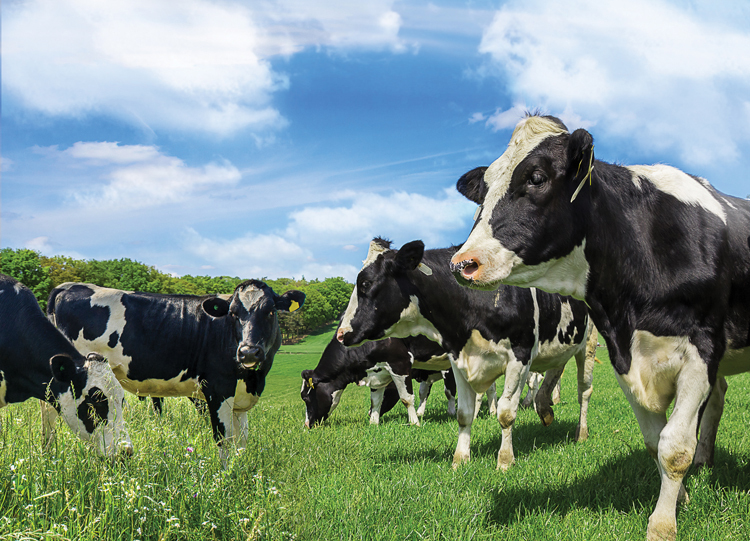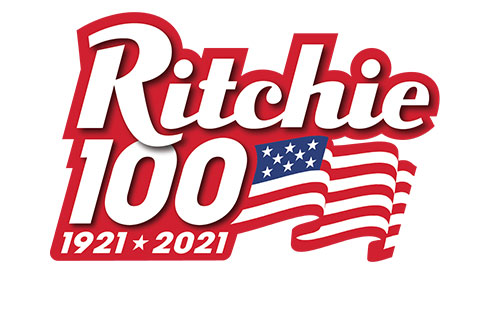
Researchers and scientists at the Daugherty Water for Food Global Institute and the Department of Animal Science of the University of Nebraska, along with the Twente Water Centre of the University of Twente, Netherlands recently collaborated to produce a report on the changes in water productivity (WP) of U.S. animal products from 1960 to 2016. The goal was to define a clear, concise way to measure and compare the WP of meat and milk production and identify opportunities to improve water efficiencies within the livestock production system.
“Water productivity is a little more intuitive of a parameter because it is the production yield divided by how much water went into producing it,” said Christopher Neale, Ph.D., Director of Research at the Robert B. Daugherty Water for Food Global Institute at the University of Nebraska. “It is the inverse ratio of a water footprint.”
More with less
As researchers compiled and analyzed data from 1960 to 2016, a clear growth trend emerged. Better breeding programs using advanced genomics, more efficient feed conversion ratios (FCR), and increased yield advancements in livestock feedstuffs such as corn and soybeans have all contributed to increased WP in all livestock sectors, with dairy posting the largest gains.
According to the data, in 2016 there were 47% fewer dairy cows producing 73% more milk than in 1960. During this period, the same volume of water was used to produce 400% more milk (weight-measured).
“The WP of all livestock products – beef, pork, chicken, turkey, milk, and eggs – increased considerably from 1.8 times for beef to 5.1 times for milk,” said Mesfin Mekonnen, Ph.D., Assistant Professor at the Department of Civil, Construction, and Environmental Engineering at the University of Alabama and one of the lead authors of the research study. “In evaluating opportunities to increase WP, one area that we examined in depth was utilizing distiller’s grains and other crop by-products as substitutes for corn and soybeans. This research will help set benchmarks and identify critical factors affecting WP to help meet the growing global demand for livestock products.”
Dairy industry leads the way
Nationally, demand for dairy products remains strong with cheese and butter leading the way. It is projected for 2021 that U.S. dairy farms will produce a staggering 227.4 billion pounds of milk. One of these highly productive farms, Rosy-Lane Holsteins of Watertown, Wis., is also a recognized leader in WP as the 2020 winner of the U.S. Dairy Center for Innovation Outstanding Dairy Farm Sustainability award. Rosy-Lane has focused on genetics, better feed conversion ratios, and finding ways to re-use water in the production environment.
“The biggest use of fresh groundwater on the farm is our plate cooler,” said Jordan Matthews, co-owner of Rosy-Lane Holsteins since 2013. “We use the 50-degree groundwater to cool the milk down to about 65 to 70 degrees. That water then goes to an old milk tanker that holds about 6,500 gallons and is reused in multiple ways to reduce our freshwater consumption. We estimate that our water re-use plan has reduced our manure hauling by about 1.5 million gallons a year.”
Additionally, genetics has helped Rosy-Lane produce 1.7 pounds of milk for every 1 pound of feed for the milking herd. The average U.S. dairy attains 1.5, according to Cornell University. This means that Rosy-Lane produces about 70 more semi-tankers of milk a year using the same inputs as other dairy farms. Another WP practice Rosy-Lane has implemented is utilizing dried by-products like cottonseed, oat hulls, and whey permeate into the cows’ feed.
Every detail counts when evaluating your WP
Water is a precious resource and taking time to evaluate new ways to eliminate water waste and institute best management practices are key to increasing your farm’s WP. Little details like re-using boot wash water to maintaining watering founts can affect your WP and your bottom line. Research shows that approximately 1% of a dairy cow’s water footprint is the 30 to 50 gallons of fresh water consumed daily.
“For many dairy farmers it is not top of mind to cost analyze your automatic watering system,” said Robert Amundson, President and CEO at Ritchie Industries, Inc. “There are so many complex factors that affect your production, but it is important to consider the maintenance costs, longevity, reliability, and durability of your founts. If you don’t have clean, fresh water on demand, it can grind your production to a halt. For 100 years, Ritchie has been made in America and we produce the finest, energy efficient founts in the industry. You can find our red and yellow founts in some of the top producing dairy farms in the country, including Rosy-Lane Holsteins.”
Ritchie Industries is headquartered in Conrad, Iowa, and was the first company to patent the automatic water valve in 1921. Ritchie has manufactured and sold over 3 million units globally.
The final takeaway
Research revealed that the dairy industry continues to lead the way in WP gains. These new benchmarks in efficiency will be useful tools for both producers and policy makers alike who are committed to responsible and sustainable water resource management.
For more information visit:
Ritchie Industries | RitchieFount.com
Daugherty Water for Food Global Institute at the University of Nebraska | waterforfood.nebraska.edu
Rosy-Lane Holsteins | www.RosyLane.weebly.com
U.S. Dairy Center for Innovation | www.usdairy.com/sustainability
